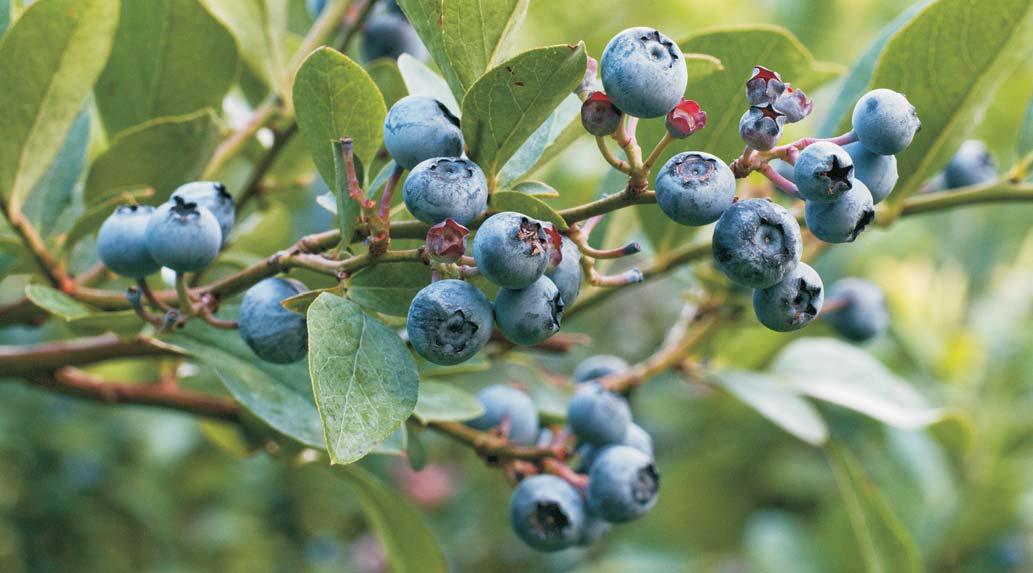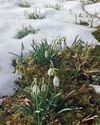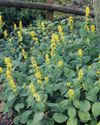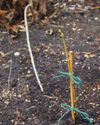
ISN'T IT THRILLING how the simple things we like as children often unfold into worlds of information and meanings as we mature? Take blueberries, for instance.
They were a special treat when I was five years old-something mom brought home from the King Kullen market to our neat and tidy neighborhood on Long Island's north shore. But then, when I was eight, my parents pulled up stakes and moved our family to the wilds of the Pocono Mountains in Pennsylvania.
Not long after moving, I lay in my bed one night and watched as fire consumed the slopes of Blue Mountain, a terminal moraine about two miles from our house. I thought it must be a disaster, but my dad explained that the fires were set deliberately. Local folks set the fires, he said, to clear out underbrush and tree growth so that more sunlight could reach the ground and stimulate the growth of wild blueberries that were a source of income for them.
Later, in high school biology, the teacher said that commercial blueberries were developed in the early 20th century from wild species in marshy lands on the Pocono Plateau and in the southern New Jersey pine barrens. The Pennsylvania species was mostly the high-bush blueberry, Vaccinium corymbosum, which can reach seven feet tall, while in the poor sandy soils of southern New Jersey, the berries were mostly lowbush blueberries, V. pallidum or V. angustifolium, which grow from 18 to 30 inches tall.
Since these wildings entered commerce, breeders have developed many crosses between high-bush and low-bush species, generally categorized as half-high blueberries, and heat-tolerant rabbit-eye blueberries (Vaccinium virgatum) that do well in the southern states. There are hundreds of named varieties descended from native North American species and thousands around the world. And that's just for blueberries.
BERRY ADVENTUROUS
Denne historien er fra September - October 2024-utgaven av Horticulture.
Start din 7-dagers gratis prøveperiode på Magzter GOLD for å få tilgang til tusenvis av utvalgte premiumhistorier og 9000+ magasiner og aviser.
Allerede abonnent ? Logg på
Denne historien er fra September - October 2024-utgaven av Horticulture.
Start din 7-dagers gratis prøveperiode på Magzter GOLD for å få tilgang til tusenvis av utvalgte premiumhistorier og 9000+ magasiner og aviser.
Allerede abonnent? Logg på

GAGA FOR GALANTHUS
As easy as they are irresistible, snowdrops boast a devoted and growing following

NEW PLANTS
Multiseason Marvels

BLUEBERRIES & CO.
Members of the genus Vaccinium provide sweet flavor, health benefits and beauty in the garden

AN ECOLOGICAL AGREEMENT
How three great minds think alike

Take It Indoors
Cs the growing season dwindles, _ potted cittus became a summer souuenir

ROOTED IN PLACE
LAYERING IS A PROPAGATION TECHNIQUE THAT TAKES A WHILE TO COMPLETE, BUT IT DEMANDS LITTLE EFFORT FROM THE GARDENER

AT HOME WITH PLANTS
Business travel and pleasure trips helped inspire this Cincinnati garden

THE GARDEN GOES DARK
Yes, gardens have their dark side. But-surprise! A garden's darkness can be good, not sinister.

LOW-WATER WONDERS
EXPLORE ONE PLANTSMAN'S DROUGHT-TOLERANT FAVORITES FOR EACH LEVEL OF THE GARDEN

Succeed With Succession- The best crops to plant throughout summer, plus how to time them right
The best crops to plant throughout summer, plus how to time them right. Once a crop like spring turnips or snap peas has finished, I tidy up the bed, amend the soil with a thin layer of compost and replant. Depending on the new crop, I may be sowing seeds or transplanting seedlings.